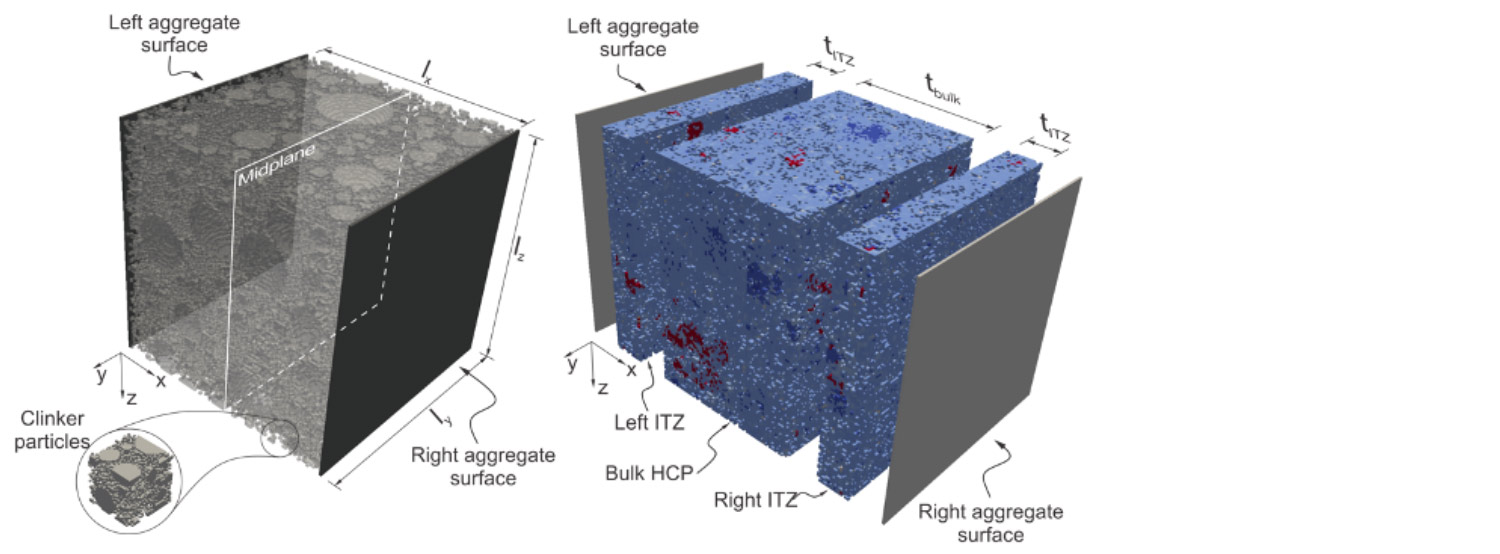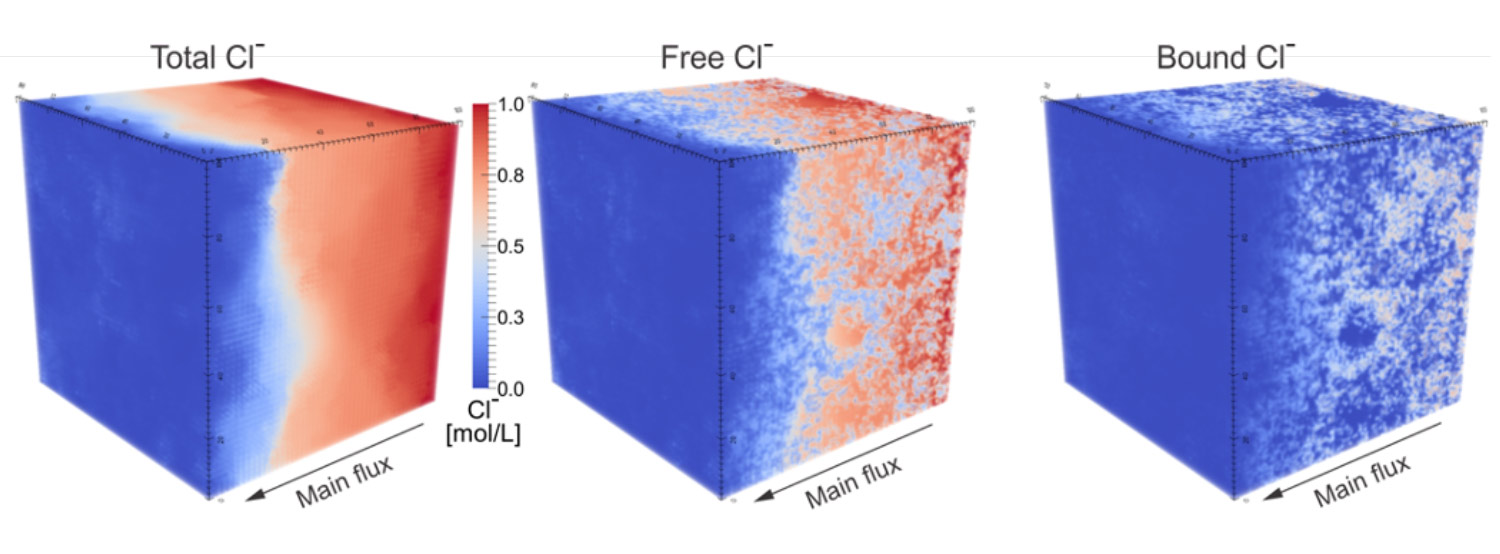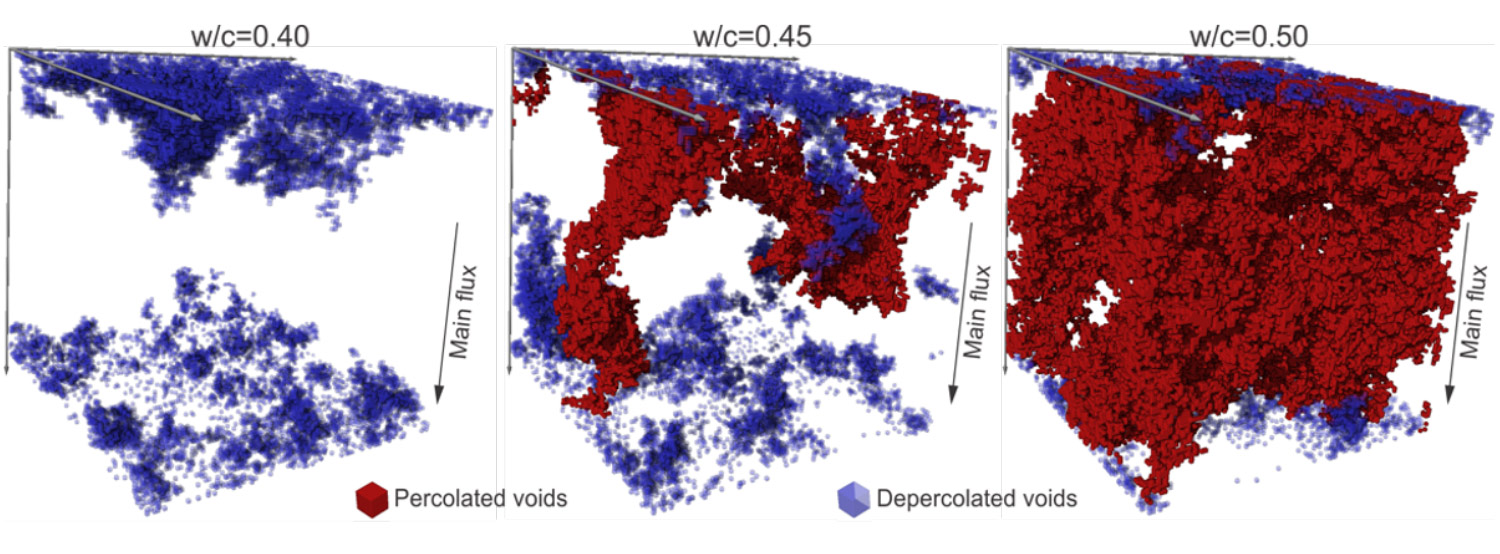Chloride diffusion in cement and concrete
In concrete structures the presence of chloride ions may induce problems such as depassivation and corrosion of the steel rebars and diffuse cracking. Hence, the assessment of their speed of penetration is of primary interest to schedule an efficient maintenance. This is a non-trivial task because the diffusion process is a multiscale problem influenced by the interaction between some components of the cement and the chloride ions through the so-called binding effect. The problem is complicated by the mesoscopic heterogeneous nature of concrete, which is constituted by aggregates, a binding matrix (the bulk paste), and an interfacial transition zone (ITZ) between these two. While aggregates can be considered impermeable, the diffusivity of ITZ and bulk paste might be different.

Aim of this project, partially in collaboration with external page NIST, is to propose for the microscale a diffusion-reaction model including the binding effect to obtain, through an upscaling, the homogenized diffusivity of ITZ and bulk paste. This allows for a realistic mesoscale analysis of the chloride diffusion behavior. The model, implemented with the finite difference method, is validated with respect to diffusion and binding tests adopting both simulated and real microstructures and comparing numerical and experimental results. The main results show that the binding effect can reduce the diffusivity of the binding matrix by up to 60% and that the ITZ has an orthotropic diffusive behavior, with a higher diffusivity orthogonal to the aggregate. Also, the diffusivity evaluated on the plain cement specimens may not be representative of the binding matrix that, to be represented, needs different parameters for bulk paste and ITZ.
Funding:
external page ERC Starting Researcher Grant “Mechanical modeling of interfaces in advanced materials and structures” (2011-2016).
external page DFG external page Research Training Group 2075 “Modelling the constitutive evolution of building materials and structures with respect to aging” (2015-2019)

